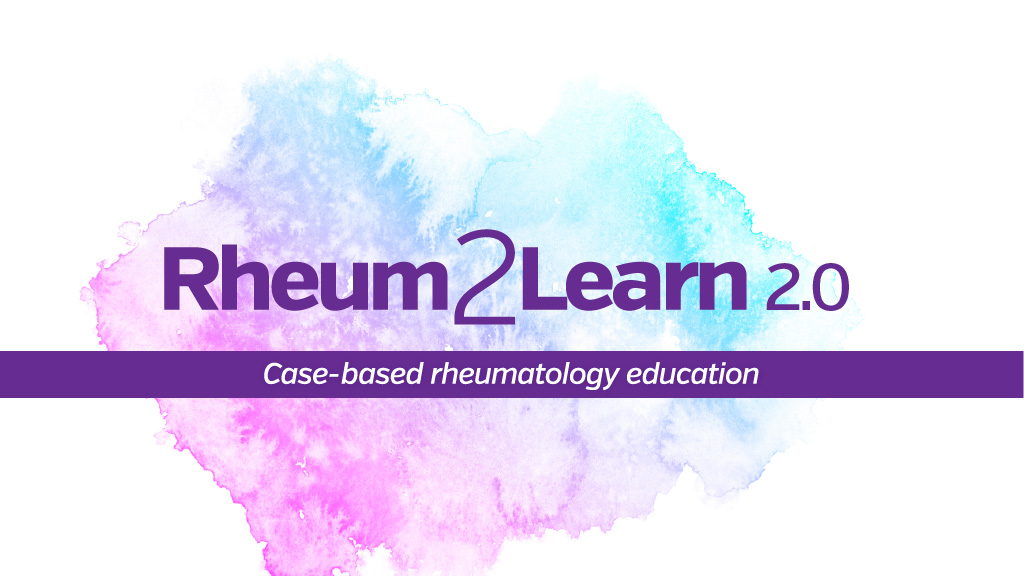
Rheum2Learn 2.0: Systemic Sclerosis
Activity Overview
Rheum2Learn 2.0 is case-based, fundamental clinical rheumatology education for residents. Each interactive activity includes three patient cases that focus on the care and assessment of individuals with rheumatologic diseases.
Learn about the diverse nature of scleroderma and how it can affect multiple organ systems. The cases in this activity discuss Raynaud’s phenomenon, cutaneous manifestations of systemic sclerosis, and scleroderma renal crisis (SRC).
Rheum2Learn 2.0 Series
This activity is part of a series. See all activities in the series below.
- Rheum2Learn 2.0: Crystalline Arthritis
- Rheum2Learn 2.0: Infectious Arthritis
- Rheum2Learn 2.0: Inflammatory Myopathies
- Rheum2Learn 2.0: Musculoskeletal Disorders
- Rheum2Learn 2.0: Musculoskeletal Examination
- Rheum2Learn 2.0: Osteoarthritis
- Rheum2Learn 2.0: Osteoporosis
- Rheum2Learn 2.0: Pediatric Rheumatology
- Rheum2Learn 2.0: Rheumatic Manifestations of Systemic Disease
- Rheum2Learn 2.0: Rheumatoid Arthritis
- Rheum2Learn 2.0: Sjögren’s Disease
- Rheum2Learn 2.0: Spondyloarthritis
- Rheum2Learn 2.0: Systemic Lupus Erythematosus
- Rheum2Learn 2.0: Systemic Sclerosis
- Rheum2Learn 2.0: System Vasculitis
Registration is complimentary.
Target Audience
Residents in training who may provide care for patients with rheumatic diagnoses in primary care, inpatient, critical care, and other clinical contexts.
The activity may also be of interest to medical students, fellows in training, advanced practice providers, practicing physicians, and other health care professionals who seek to strengthen their clinical knowledge of rheumatic diseases.
Learning Objectives
Upon completion of this activity, participants should be able to:
- Identify the differential diagnosis and appropriate workup for primary versus secondary Raynaud’s phenomenon
- Interpret the 2013 ACR/EULAR classification criteria for systemic sclerosis (SSc) and apply it to a patient case
- Distinguish limited vs. diffuse systemic sclerosis based on the extent of skin involvement
- Identify first line pharmacologic and non-pharmacologic treatments for Raynaud’s phenomenon and cutaneous manifestations of systemic sclerosis
- Review the differential diagnosis for shortness of breath in a patient with systemic sclerosis
- Highlight cardiopulmonary disease (interstitial lung disease and pulmonary arterial hypertension) as the major causes of mortality in systemic sclerosis
- Describe risk factors associated with an increased risk for scleroderma renal crisis (SRC)
- Review the typical clinical presentation and laboratory findings of scleroderma renal crisis for diagnosis and prognosis
- Outline the approach to the treatment of scleroderma renal crisis emphasizing prompt need to control blood pressure with ACE inhibitor therapy
- Understand the implications of scleroderma renal crisis on prognosis in systemic sclerosis
CE & MOC Information
This activity is not eligible for CME/MOC.
Acknowledgement of Commercial Support
No commercial support was provided for this activity.
Educational Activity Policies
See ACR educational activity policies, including the online enduring activity refund policy.